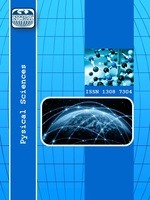ATOM TRANSFER RADİKAL POLİMERİZASYONUYLA FARKLI UÇ GRUPLU POLİSTİREN SENTEZİ, KARAKTERİZASYONU VE TERMAL DEGRADASYON DAVRANIŞININ İNCELENMESİ
Bu çalışmada, önce piperazin ve 1-metil piperazinin sodyum karbonat varlığında bromasetilklorürle olan reaksiyonundan N,N'-di(bromasetil) piperazin ve N-metil,N'-(bromasetil) piperazin gibi iki farklı başlatıcı sentezlendi. Hazırlanan başlatıcılar atom transfer radikal polimerizasyon yoluyla bir ucunda ve iki ucunda brom içeren polistirenlerin hazırlanmasında kullanıldı. CuBr/2,2'-bipiridin ve N-bromasetil, stirenin ATRP kinetiği 130oC'de araştırıldı. Ayrıca sentezlenen polimerler makrobaşlatıcı olarak kullanılıp yine stirenle zincir uzatma çalışmaları gerçekleştirildi. Polimerlerin termal özellikleri DSC ve TGA teknikleri ile belirlendi. ATRP şartlarında hazırlanan polistirenin termal degradasyon davranışı özel bir degradasyon sistemiyle çalışıldı. Bu amaçla hazırlanan polistiren oda sıcaklığında 500oC'ye kadar ısıtıldı. Degradasyon ürünleri soğuk halka fraksiyonu (CRF) ve –196oC'de tutulan uçucu sıvı fraksiyon halinde toplandı. Ürünler GC-MS, IR, 1H-NMR teknikleriyle karakterize edildi. Bu çalışmada en önemli ürünler stiren, stiren dimeri ve trimeri olarak belirlendi.
Anahtar Kelimeler:
ATRP, STİREN, TERMAL DEGRADASYON, DSC, GC-MS,
SYNTHESIS,CHARACTERIZATION AND INVESTIGATION OF THERMAL DEGRADATION BEHAVIOUR OF POLYSTYRENE WITH DIFFERENT END GROUP BY ATOM TRANSFER RADICAL POLYMERIZATION
In this work, two different initiators were first synthesized by reaction of bromoacetylchloride with piperazine and 1-methyl piperazine in presence of sodium carbonate. The initiators prepared were used for the synthesis of polystyrene with bromine chain end via atom transfer radical polymerization. The polystyrenes with bromine chain end synthesized with initiators such as N,N'-di(bromoasetyl) piperazine ve N-methyl-N'-(bromoasetyl) piperazine were used as macroinitiator. The kinetic of the ATRP of styrene with CuBr/2,2'-bipyridine and N-bromoacetyl as catalyst and initiators, respectively, was investigated at 130oC. The thermal behaviour of polymers was determined by DSC and TGA. The thermal degradation behavior of polystyrene prepared by ATRP was studied using thermogravimetry and a special degradation system with a single line vacuum system consisting of degradation tube with a condenser for product collection and a liquid nitrogen trap (-196oC). For this purpose, polystyrene prepared under ATRP conditions was heated from ambient temperature to 500oC. The products of degradation were collected at two different fractions, which are cold ring fraction (CRF) and volatile liquid fraction trapped at –196oC. The products were characterized by GC-MS, IR, 1H-NMR techniques. In this work, the most important products are given as styrene, dimer and trimer of styrene.
Keywords:
ATRP, STYRENE, THERMAL DEGRADATION, DSC, GC-MS, ,
- Başlangıç: 2009
- Yayıncı: E-Journal of New World Sciences Academy
